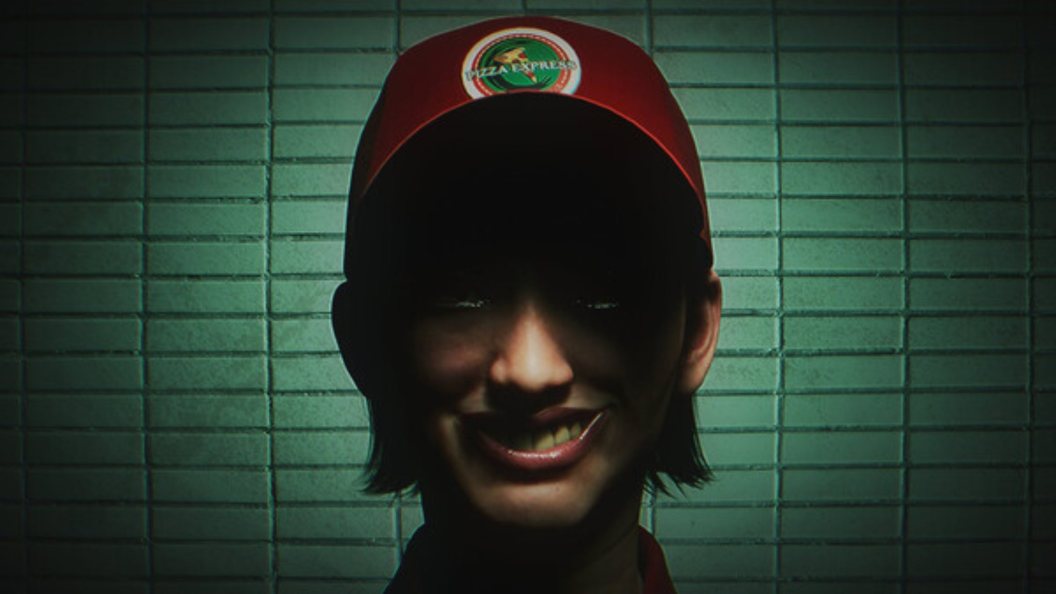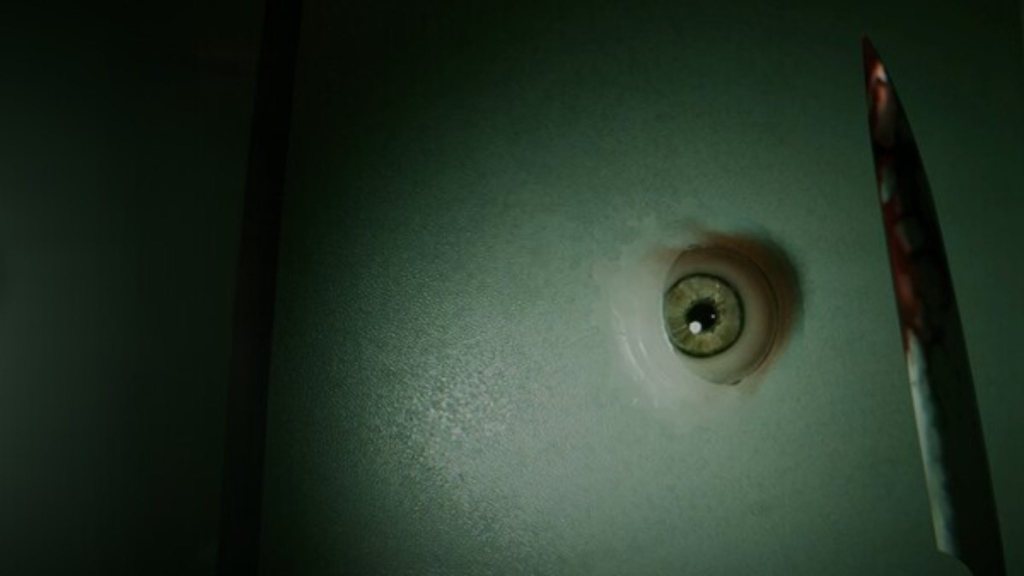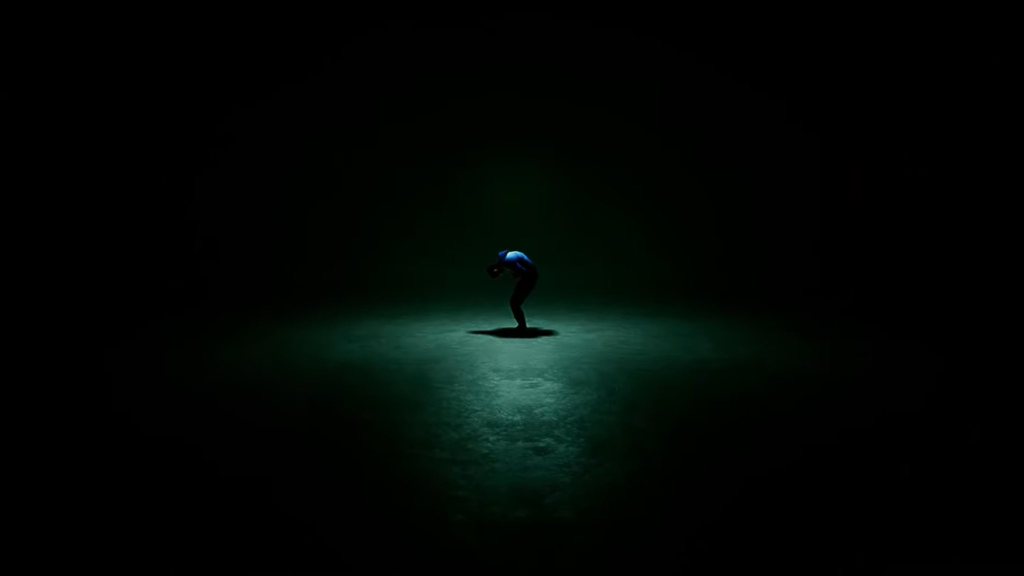
Shinji stays inside his apartment by choice until he realizes that he cannot leave, even if he wanted to. The same thing that killed his old friend is coming for him next. A warning is given: don’t look at it. But someone’s at the door. You don’t want to see or deal with anyone and the thought of opening the door is off-putting. What if they want to come in? But the peephole offers limited safety when that thing on the other side is smiling at you, menacingly. Something’s wrong here.
BrokenLore: DON’T WATCH is a new psychological horror game and is the latest installment in the BrokenLore series. Its story can be a bit difficult to fully understand, so we’ve got the breakdown of everything found in DON’T WATCH.
BrokenLore: DON’T WATCH Story, Explained

Shinji is a young man who cannot leave his apartment as he is Hikikomori: a person with extreme social withdrawal, who confines themself, unable to go to work. He’s a shut-in and very antisocial, finding the smallest things frustrating, and getting angry at anyone who attempts to talk to him. We’re quickly shown Shinji’s hateful personality as he curses under his breath over a Delivery Woman ringing his doorbell instead of leaving the pizza box on the doorstep.
Previously being supported by his parents financially, they cut off the funds to try and force Shinji back into society. He’s behind on the television bill, where an MHK Collector demands for payment or he’ll fine Shinji and take him to court.
Shinji’s friend Junko is worried about Hideo Nakamura, who’s terrified of something trying to get inside his apartment. Shinji ignores this at first, but a breaking news story shows a deceased Hideo who has been decapitated. Hideo’s final words to Junko were that something’s coming for them all and to not look it in the eyes. It seems this entity specifically targets Hikikomori. As one door closes, another one opens—a different kind of reality.

Shinji is plagued by supernatural occurrences that cause him distress. The multi-eyed entity can shape-shift, transforming into people Shinji has frequent contact with: the Delivery Woman, MHK Collector, and his mother. But their faces and voices are distorted, twisted, wrong. Junko tells Shinji to destroy the eyeballs to stop the Hyakume.
RELATED: Amanda the Adventurer Lore, Explained
There’s no escape for the entire apartment has become a fleshy nightmare, where a decapitated Delivery Woman and Collector are the only warm things in the winding corridors. Eyes cover the walls as the Hyakume tries to hunt Shinji, where he must cover his own eyes to stay safe.
Shinji thinks he’s escaped, but the elevator takes him straight back to the apartment. Suddenly, he’s transported to a low-poly world. Leaving here without exploring has consequences for you’d leave Shinji stuck in the past. Following the wires, Shinji is chased by a more fragile humanoid entity with hands covering its body.
Monster Symbolism

Six televisions are scattered around this land. Unplugging these removes the weighted bags on the entity’s back that were bringing this creature down. The monster is Shinji’s subconscious, a manifestation of his stress, responsibilities, family, and societal expectations. Shinji is literally removing the weight off his shoulders. They are his baggage he’s carried around for years, covering his vision, therefore stopping him from seeing his possible future.

The televisions are reminders of Shinji’s choices and the path he chose not to venture down. Instead, he chose to stay inside because the pressure to conform to his parents’ wishes became too much. The societal pressure to fit in is suffocating. Known for their long hours, overtime shifts, with loyal employees, Japan has a tough system to achieve that work-life balance. On top of this is the nonsense we’re fed daily through consumerism. That we’re “supposed” to spend all our income on things we don’t actually need: a flashy car, a big house, a Rolex. We’re told to get these for power, status, to tell others how “rich” we are, how “important” we are in society, and how “serious” we should be taken.
Most of us don’t like change, which is likely why the monster is trying to stop Shinji from removing the things that stopped him from developing, progressing, and moving forward. Being blind (metaphorically) stops us from seeing that there’s a way out. We cling to the things that stop us. Shunji didn’t go to university and he didn’t get married, two things his parents hold over him. The pressure to stay in a job, giving years of your life to it, is difficult.
Shunji can return home once all six TVs are unplugged.
Good Ending

When Shinji returns home, Junko is terrified as the Hyakume has come for her. You hear screaming on the other side. They were wrong, not looking at it lets it win. Choosing to ignore what is stopping you from moving on. Shinji realizes he must face his fears to defeat the Hyakume. The elevator changes from six buttons to one, symbolizing that Shinji has one goal, one destination, and one purpose.
Shinji reaches the final hallways with a light at the end. The filthy walls start to glisten white as Shinji ventures near the exit. Leaving his past behind, the things that stopped him from moving on. He is now able to go forward, free.
Bad Ending

The bad ending is achieved by immediately exiting the low-poly world, ignoring the televisions you’re meant to unplug. Taking the exit door takes you home, where Junko calls you. Shinji exits the apartment, same as last time, somehow knowing he’s supposed to face his fears. You reach the elevator, but instead of finding the exit, you’re face-to-face with a cowering Shinji, consumed by society weighing him down. Standing in the darkness by himself, the elevator closes behind you. Shinji transforms into the monster who, in turn, consumes us.
Secret Ending

The secret ending is unlocked by clicking on objects in your apartment in a specific order. There’s a hint to this on the wall opposite the bathroom door, with stacked cans, correlating to the stack in Shinji’s living room/bedroom. You need to click on them in this order: speaker, cans, guitar, radio, game, and air conditioner.
A motherboard door appears, with the same green symbol as seen in BrokenLore: LOW. This links two characters from that game to the events in DON’T WATCH. Anne was the daughter of Naomi, the protagonist in LOW. Anne will also be the playable character in the upcoming UNFOLLOW. These secrets imply these stories are set in the same world and that they are all simulations, orchestrated by a mysterious company. Maybe BrokenLore is similar to Vanilla Sky in that its participants are willingly putting themselves inside the simulations to help deal with their psychological distress, but are unaware of this once they’re inside.
The post BrokenLore: DON’T WATCH Story and Endings, Explained appeared first on ComicBook.com.

